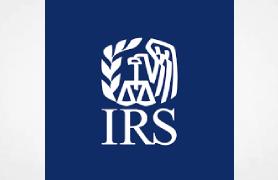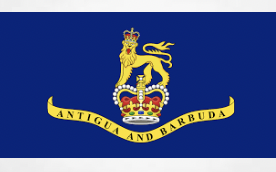By Alison Choy Flannigan and James Blok
Introduction
The increased use of relatively new therapies, such as medicinal cannabis in Australia, coupled with the advancements of telemedicine, e-prescribing and online dispensing, underscores the importance of staying up-to-date with the relevant laws governing the promotion of therapeutic goods.
The recent media spotlight on the Dolphins National Rugby League club’s decision to remove Alternaleaf branding from its jerseys and stadium signage highlights the need for pharmaceutical and medicinal cannabis manufacturers, sponsors and associated entities to understand their obligations regarding medical advertising to avoid significant penalties.[1]
The Therapeutic Goods Administration (TGA) has commenced proceedings in the Federal Court of Australia against Montu Group Pty Ltd, its subsidiary Alternaleaf Pty Ltd and their common director, Mr Christopher Strauch, for alleged unlawful advertising of medicinal cannabis on websites and social media.[2]
It’s alleged that Montu and Alternaleaf unlawfully advertised medicinal cannabis using terms, including ‘medical cannabis’ and ‘plant medicine’, to promote the Alternaleaf online clinic, which enabled patients to purchase prescription-only medicines after completing an online consultation process. It’s also alleged Montu operated a website during Medicinal Cannabis Awareness Week 2023, which advertised medicinal cannabis to the public.
The companies allegedly promoted the use of medicinal cannabis for the treatment of serious diseases, conditions and disorders. Such references, known as ‘restricted representations’ or’ prohibited representations’, aren’t allowed to be included in advertising for therapeutic goods, unless an approval or permission is given by the TGA.
The advertisements also allegedly:
- implied medicinal cannabis had been approved or recommended by the TGA;
- represented medicinal cannabis to be safe or without harm or side effects, or magical or miraculous; and
- included endorsements from current or former health professionals.
The TGA alleges Mr Strauch aided, abetted, counselled or procured the alleged contraventions by Montu and Alternaleaf. Additionally, the TGA alleges Mr Strauch is personally liable for the alleged contraventions by the companies.
This court action follows the TGA’s civil penalty proceedings against another medicinal cannabis company in December 2023. Over the last two years, the TGA has issued 119 infringement notices (totalling over $1.4 million) in response to concerns about alleged unlawful advertising in the medicinal cannabis industry.[3]
The advertising of medicines is highly regulated in Australia, including under the Therapeutic Goods Act 1989 (Cth) (Therapeutic Goods Act).
Prohibition of advertising to the public
Advertising of therapeutic goods to the public that doesn’t comply with the Therapeutic Goods Act and the Therapeutic Goods Advertising Code (Advertising Code) is prohibited under sections 42DM and 42DMA of the Therapeutic Goods Act. These provisions apply to advertising of all therapeutic goods, including medicinal cannabis.
Therefore, the unlawful advertising of a prescription medicine that doesn’t comply with the Advertising Code would attract an offence for unlawful advertising of a prescription medicine, as well as non-compliance with the Advertising Code.
Under the Therapeutic Goods Act and the Advertising Code:
- prescription medicines are prohibited from being advertised to the public which are listed under Schedule 4 (prescription only medicines) or Schedule 8 (controlled drugs) of the poisons standard;
- Schedule 3 medicines (pharmacist-only medicines), excluding those listed in Appendix H of the Poisons Standard, must not be advertised to the public; and
- unregistered medicines must not be advertised to the public, including those supplied under the Special Access Scheme and the Authorised Prescriber Scheme.
Advertising to health practitioners and health professionals
Schedule 3, Schedule 4 and Schedule 8 medicines may be advertised exclusively to particular health practitioners and health professionals. This form of advertising must not be accessible to the public.
Schedule 3, Schedule 4 and Schedule 8 medicines may be advertised exclusively to the following health practitioners and health professionals listed in section 42AA of the Therapeutic Goods Act:
(a) health practitioners being a person who, under a law of a state or internal territory, is registered or licensed to practice in any of the following health professions:
(i) Aboriginal and Torres Strait Islander health practice;
(ii) dental (not including the professions of dental therapist, dental hygienist, dental prosthetist or oral health therapist);
(iii) medical;
(iv) medical radiation practice;
(v) nursing;
(vi) midwifery;
(vii) occupational therapy;
(viii) optometry;
(ix) pharmacy;
(x) physiotherapy;
(xi) podiatry;
(xii) psychology;
(aa) persons who, under a law of a state or internal territory, are registered or licensed to practice in any of the following health professions:
(i) chiropractic;
(ii) dental therapy, dental hygiene, dental prosthetics or oral health therapy;
(iii) osteopathy;
(iv) paramedicine; or
(b) persons who are:
(i) engaged in the business of wholesaling therapeutic goods; or
(ii) purchasing officers in hospitals; or
(iii) purchasing therapeutic goods on behalf of a registered charity; or
(iv) purchasing therapeutic goods on behalf of a government or government authority (including a foreign government or foreign government authority); or
(v) purchasing officers, or practice managers, for a person mentioned in above (other than a person in a retail pharmacy who, under a law of a state or internal territory, is registered or licensed to practice in the health profession of pharmacy); or
(c) herbalists, homoeopathic practitioners, naturopaths, nutritionists or practitioners of traditional Chinese medicine registered under a law of a state or territory; or
(d) a class of persons specified under subsection (1A) by the Minister.
(2) Advertisements may be provided to members of an Australian branch of prescribed bodies which are listed in Schedule 1 to the Therapeutic Goods Act, for example, the Complementary Medicine Association.
However, information may be provided to a patient as part of advice or information given directly to a patient by a person referred to in paragraph (1)(a), (aa) or (c) or subsection (2) in the course of treatment of that patient.
What does ‘advertise’ mean under the Therapeutic Goods Act?
‘Advertise’ in relation to therapeutic goods includes making any statement, pictorial representation or design that is intended, whether directly or indirectly, to promote the use or supply of the goods, including where the statement, pictorial representation or design:
- is on the label of the goods;
- is on the package in which the goods are contained; or
- is on any material included with the package in which the goods are contained.
The definition of ‘advertise’ applies to all forms of media, including:
- traditional media, such as television, radio and print media;
- electronic media, such as websites, mass communication via email or text messages, blogs, podcasts, discussion forums, social media and online business profiles; and
- material presented to the public through other means (eg workshops and other face-to face sessions, webinars, podcasts, conferences, expos, exhibitions, billboards, shopfronts, signage, leaflets and posters/displays).
Whether material is classified as advertising depends on the context in which it’s viewed.
When considering whether information disseminated about therapeutic goods is advertising, it’s important to consider the broader context in which the material is viewed. This includes all elements of the material that contribute to the message it conveys, including:
- the context in which the information or activity occurs;
- the audience the information is directed to, what their likely take-out message is and if they are likely to consider it promotional; and
- the use of non-verbal and unwritten messages, such as pictorial elements. These may be important in assessing the communication and can alter the take-out message that viewers receive.
For example, if an advertisement for a health service, such as a pain treatment service, included references to medicinal cannabis (including in the company, business or trading name), the reasonable person viewing the material would likely think the material had been created to promote the use of medicinal cannabis (for pain), as well as to promote the pain treatment service.
Almost all references to a prescription-only medicine in the context of an advertisement for a health service would risk the advertisement becoming an advertisement in relation to a therapeutic good.
Health services where the only available treatment option involves the use of a specific prescription medicine, as is often the case with medicinal cannabis clinics, should only promote the type of consultations the service offers, not the product. For example: ‘our clinic offers consultations related to pain management’.
The distinction between the promotion of a health service and the therapeutic good used in the delivery of that health service can be subtle, so advertisers are urged to consider if a reasonable consumer would understand an advertisement to be promoting the use and supply of the therapeutic good.[4]
Penalties
There are criminal and civil penalties for breaching the advertising regulations under the Therapeutic Goods Act. Directors and officers can incur personal liability.
The maximum criminal penalties are:
- where use of the goods in reliance on the advertisement has, is likely to or would result in harm or injury to any person: imprisonment for five years, fine of 4,000 penalty units ($1,252,000) or both;
- for a general advertising offence: imprisonment for 12 months, fine of 1,000 penalty units ($313,000) or both; and
- for a strict liability advertising offence: fine of 100 penalty units ($31,300).
The maximum civil penalty for a general advertising offence is 5,000 penalty units for an individual ($1,565,000) and 50,000 penalty units ($15,650,000) for a body corporate.
Regulation of medicinal cannabis
Medicinal cannabis can be included in the Australian Register of Therapeutic Goods (ARTG) as a prescription medicine. If a medicinal cannabis product isn’t included in the ARTG, it’s an unapproved therapeutic good and is only available to patients through specific access pathways.
Medicinal cannabis currently available for use and supply in Australia meet the criteria for Schedule 4 (prescription only medicines) or Schedule 8 (controlled drugs) in the Poisons Standards and are regulated as prescription medicines.
Advertising medicinal cannabis regulated as prescription medicines to the public is prohibited under subsections 42DL(10) and 42DLB(7) of the Act.
Certain preparations of cannabidiol may be supplied as a Schedule 3 pharmacist-only medicine. Schedule 3 cannabidiol cannot be advertised to the public. At the time of publication, there are no products on the ARTG that meet the requirements for this classification.
It’s illegal to promote any unregistered medicine to consumers, including under the Special Access Scheme and the Authorised Prescriber Scheme.
The TGA has published a number of medicinal cannabis resources for consumers, health professionals and businesses.[5]
The updated advertising guidance for businesses involved with medicinal cannabis products clarifies the application of the Act in relation to medicinal cannabis advertising.[6]
The interpretation of the TGA on the topic of the promotion of medicinal cannabis is very broad.
The prohibition on advertising medicinal cannabis to the public applies to any statement, pictorial representation or design that promotes the use or supply of medicinal cannabis. This can include references to medicinal cannabis through:
- company, business or trading names;
- product names or trade names or part thereof, eg referring to medicinal cannabis generally or a specific medicinal cannabis product;
- abbreviation or acronyms for the goods or their active constituents (eg CBD, THC, Delta-9 etc);
- colloquial names or nicknames for cannabis; and
- other means, including hashtags or images likely to draw the consumer’s mind to medicinal cannabis, including photos, logos, or graphics of cannabis plants or leaves.
The classification of material as advertising isn’t contingent on there being a single promotional element. Advertising can be formed from the combination of separate statements, pictorial representations or designs that, taken together, promote the use or supply of therapeutic goods. Therefore, a reference to ‘plant-based medicine’, although not expressly referring to medicinal cannabis, is likely to be considered promotional if, based on the surrounding context, it draws the viewers’ mind to medicinal cannabis.
Care needs to be taken in promoting medicinal cannabis, including through trading names.
Other laws, including the Australian Consumer Law
Other laws are also relevant in promoting medicines, including the Australian Consumer Law, which prohibits conduct that is misleading or deceptive or is likely to mislead or deceive.
The maximum penalties for each breach of these provisions of the Australian Consumer Law are currently:
Corporations
The greater of:
- $50,000,000;
- if the court can determine the value of the ‘reasonably attributable’ benefit obtained, three times that value, or
- if the court cannot determine the value of the ‘reasonably attributable’ benefit, 30% of the corporation’s adjusted turnover during the breach turnover period for the contravention.
Individuals
$2,500,000.
This article provides general information and not legal advice. Seek personalised legal advice tailored to your circumstances. Want to know more? Get in touch with Alison Choy Flannigan.
The information in this article is current as at 13 May 2024.
[1] Dolphins agree to remove medicinal cannabis clinic branding from NRL games
[2] Court proceedings initiated against Montu Group Pty Ltd, Alternaleaf Pty Ltd, and an individual for alleged unlawful advertising of medicinal cannabis
[3] Court proceedings initiated against Montu Group Pty Ltd, Alternaleaf Pty Ltd, and an individual for alleged unlawful advertising of medicinal cannabis
[4] Advertising guidance for businesses involved with medicinal cannabis
[5] TGA medicinal cannabis hub
[6] Advertising guidance for businesses involved with medicinal cannabis products
















